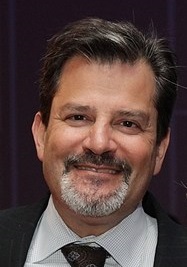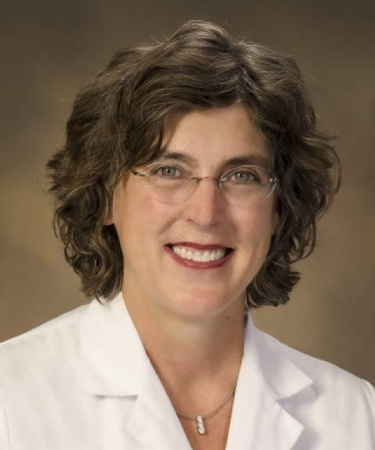Monday November 05, 2018 –
Friday November 09, 2018
8:00am-12:15pm
Event Details
When
Where
The Westin Sarasota, FL
The Westin, Sarasota, Florida
Event Code
SEMLA-3320181105
Course Topics
Day 1
Delirium in the Elderly – Current Concepts.
Upon completion of this session, the participant should be able to:
- Specify diagnostic features and common causes of delirium in seniors.
- Distinguish the causes of persistent delirium.
- Use evidence based medicine to formulate treatment approaches to delirious seniors.
- Recognize treatment options for intermittent agitation using evidence based medicine.
Evaluation and Treatment of Dementia in Seniors. Upon completion of this session, the participant should be able to:
- Determine the common causes of cognitive dysfunction and dementia in seniors.
- Develop an evidence based evaluation of seniors with cognitive dysfunction.
- Evaluate the relative risks and benefits of available treatment options for dementia in seniors.
- Distinguish the central role of caregiver education and support in treating seniors with dementia.
Prevention of Type 2 Diabetes.
Upon completion of this session, the participant should be able to:
- Recognize patients with pre-diabetes.
- Employ current Guidelines and recommendations of the ADA regarding diabetes prevention.
- Treat CVD risk factors in patients with pre-diabetes.
Treatment of Hyperglycemia in Type 2 Diabetes.
Upon completion of this session, the participant should be able to:
- Understand the glucose targets in T2DM.
- Employ the current ADA Guidelines for pharmacological therapy.
Develop individualized therapeutic regimens to optimize glycemic control.
Day 2
Common Endocrine Disorders.
Upon completion of this session, the participant should be able to:
- Recognize, evaluate and treat common endocrine abnormalities and employ Endo Society Guidelines to include:
- Hypoglycemia,
- Hypercalcemia,
- Low testosterone,
- Adrenal masses.
Diabetes/Endocrine Cases.
Upon completion of this session, the participant should be able to:
- Appraise key issues and develop a treatment plan, employing the ADA and ATA Guidelines, for challenging diabetes and endocrine cases.
Sensible Prescribing Practices for the Elderly.
Upon completion of this session, the participant should be able to: EBM, COMP
- Appraise and appreciate the limits of studies on drug safety and efficacy as they apply to the elderly.
- Assess the subtle but significant drug side effects in the elderly.
- Distinguish undesirable prescribing practices and employ better approaches based on current evidence-based referenced literature.
Vitamin B-12 and Vitamin D in Seniors.
Upon completion of this session, the participant should be able to: EBM, COMP
- Integrate the normal physiology of Vitamins B-12 and D.
- Differentiate the pathologic syndromes associated with B-12 and D deficiency.
- Develop an evidence based evaluation of B-12 and D deficiency for seniors.
- Develop an evidence based approach to treatment options for B-12 and D in seniors.
Day 3
A Practical Approach to Falls and Urinary Incontinence in the Elderly.
Upon completion of this session, the participant should be able to:
- Integrate the concept of multifactorial causes underlying falls and employ the American Geriatrics Society Guidelines for the Prevention of Falls and urinary incontinence in seniors.
- Develop a full assessment approach to evaluate different causes, using detailed physical examination and functional performance evaluations.
- Differentiate the effects of normal aging from pathologic processes and adverse drug effects as contributing to the causes of falls and incontinence.
- Apply NIH guidelines to formulate a preventative and therapeutic plan of care.
Contemporary Issues in End of Life Care.
Upon completion of this session, the participant should be able to:
- Develop a practical approach to assessment of the whole patient in a hospice setting.
- Formulate effective approaches to common physical symptoms in the terminally ill.
- Integrate effective clinical care of patients and their families in the last days of life based on current evidence-based literature, Guidelines and recommendations of the American Geriatrics Society and the National Hospice and Palliative Care Organization.
- Relate dementia as a terminal illness.
Approach to the Management of Chest Pain.
Upon completion of this session, the participant should be able to:
- Evaluate the complaint in the context of history, physical exam, and EKG findings.
- Develop a strategy to use cardiac biomarkers in the evaluation of ACS.
- Use recent research studies and guidelines to develop an approach to the patient with chest pain.
Practical Approach to the Diagnosis and Management of Heart Failure.
Upon completion of this session, the participant should be able to:
- Appraise the symptoms of congestive heart
failure and detect the common causes of systolic heart failure.
- Employ the current standard-of-care therapies.
- Determine which patients will benefit from device
therapy and specify when to refer patients for more advanced cardiac care.
- Be familiar with, and be able to apply, the 2013 ACCF/AHA Guidelines for the Management of Heart Failure
Day 4
Treatment of Primary Headache Syndromes.
Upon completion of this session, the participant should be able to:
- Appreciate the role of abortive therapy for migraine, tension-type, and cluster headaches.
- Recognize the range of options for pharmacologic acute and preventive therapy, as recommended by the AHS 2015 Evidence-Based recommendations for migraine, as well as options for tension-type, and cluster headaches.
- Develop non-pharmacologic treatment strategies for migraine as per the most recent Cochrane Systematic Review.
Hypertension: Recent Trials and Rational Therapy.
Upon completion of this session, the participant should be able to:
- Appreciate that all antihypertensive medications do not equally reduce cardiovascular risk.
- Apply the current JNC guidelines to clinical care of hypertensive patients.
- Recognize compelling indications for selection of initial antihypertensive therapy.
- Identify which drugs most effectively reduce the risk of cardiovascular disease.
Strategies to Address the Issue of Preventable Hospital Readmissions.
Upon completion of this session, the participant should be able to:
- Identify the factors which contribute to increase risk of readmission.
- Stratify the risk for readmission utilizing evidence-based tools.
- Develop a transition of care strategy to reduce the likelihood of a preventable readmission.
Cardiac Issues in Peri-Operative Risk Assessment.
Upon completion of this session, using multiple research trials, as well as the recommendations of the ACC/AHA, the participant should be able to: GL, COMP
- Develop a consistent approach to the cardiovascular risk stratification for patients having non-cardiac surgery.
- Determine the factors involved in maximizing cardiovascular outcomes for patients having non-cardiac surgery.
- Assess the co-morbidities associated with valvular heart disease, tobacco use, and hyperlipidemia in the setting of non-cardiac surgery.
Day 5
Practical Approach to the Patient with Potential DVT.
Upon completion of this session, using multiple research trials as well as applying recommendations from the ACCP, AAFP/ACP, and the AHA/ACC, the participant should be able to:
- Obtain an appropriate medical history to better identify those patients at risk.
- More confidently evaluate and assess the patient suspected of having DVT.
- Better manage patients with the confirmed diagnosis of DVT.
Practical Approach to the Patient with Hyperlipidemia.
Upon completion of this session, using multiple research trials as well as the recommendations of the NCEP, the participant should be able to:
- Apply the current NCEP guidelines.
- Develop a practical approach for considering the new medications available.
- Consider the new targets developed for cholesterol end point.
Rational Management of Depression in Primary Care.
Upon completion of this session, the participant should be able to:
- Employ an appropriate initial approach to use of the updated USPSTF Guidelines for screening of the patient with depression.
- Determine the proper role of second generation antidepressants as per the ACP Guideline.
- Assess the effectiveness of augmentation and switching strategies.
- Specify the most common side effects, as per the 2016 ACP Guidelines, of commonly used antidepressants.
New Drugs for the Primary Care Physician: What You Need to Know.
Upon completion of this session, the participant should be able to:
- Survey important advances in pharmacotherapy that pertain to primary care practice.
- Discuss the efficacy and list the side effects for each drug.
- Differentiate key new drugs with previously available medications for similar indications.
Learning Objectives
Things to Do
Sarasota, Florida
Sarasota offers a truly impressive blend of shopping, cuisine, and attractions. So sail into a breathtaking sunset, golf on lush green fairways, explore St. Armands Circle, or just relax and sink your toes into some of the finest sand in the world.
White sand beaches
21 Zagat-rated restaurants
MLB spring training
Museums, theaters, and festivals
Dozens of golf courses
Presented By

Gerald Smetana
Professor of Medicine, Harvard Medical School; Senior Physician, Division of General Medicine and Primary Care, Beth Israel Deaconess Medical Center, Boston, MA

Gary Oberlender, MD, FACP
Consultant in Geriatric Medicine, Senior Evaluations, LLC; Charlotte, NC

David Horowitz, MD
Professor of Clinical Medicine, Perelman School of Medicine at the University of Pennsylvania; Associate Chief Medical Officer, University of Pennsylvania Health System; Philadelphia, PA

Merri Lou Pendergrass
Professor of Medicine, Clinical Chief of Endocrinology, and Director of the Diabetes Program, University of Arizona College of Medicine, Tucson, AZ
Accreditation
Cancellation & Refund Policy
We understand that plans may change. Please review our cancellation and transfer options below:
30+ Days Before Conference Start Date
- Refund: Full refund minus a $50 processing fee.
- Transfer: Registrations can be transferred once, at no cost, to another conference within two years. Alternatively, registration may be placed “on hold” for up to 12 months, allowing participants to choose a suitable conference for transfer within that period.
Less Than 30 Days Before Conference Start Date
- Refund: No refunds available.
- Transfer: Registration may be transferred to another conference within 2 years at no cost. Alternatively, registration may be placed “on hold” for up to 12 months, allowing participants to choose a suitable conference for transfer within that period.
Additional Notes
- No-shows are non-refundable and non-transferable.
- If we cancel a conference, you may choose a full refund or transfer to another event.
On-Demand Courses
- All sales are final. No refunds or transfers.
Invitation Letters
If American Medical Seminars issued you an Invitation Letter to attend a CME conference in the United States and you need to cancel your registration, we will only refund 50% your registration fee. This is to cover the cost of your Invitation Letter and processing costs. By registering, you agree to the non refundable portion of the registration.
Disclaimer
In the event that AMS is required to cancel a live conference, registrants will receive a full refund within 7 business days. AMS is not responsible for charges associated with cancelled flights or hotel rooms.
How to Request a Cancellation or Transfer
Requests must be submitted in writing to mail@ams4cme.com or by calling 1-800-267-4263.
Note: By registering, you agree to this policy.


